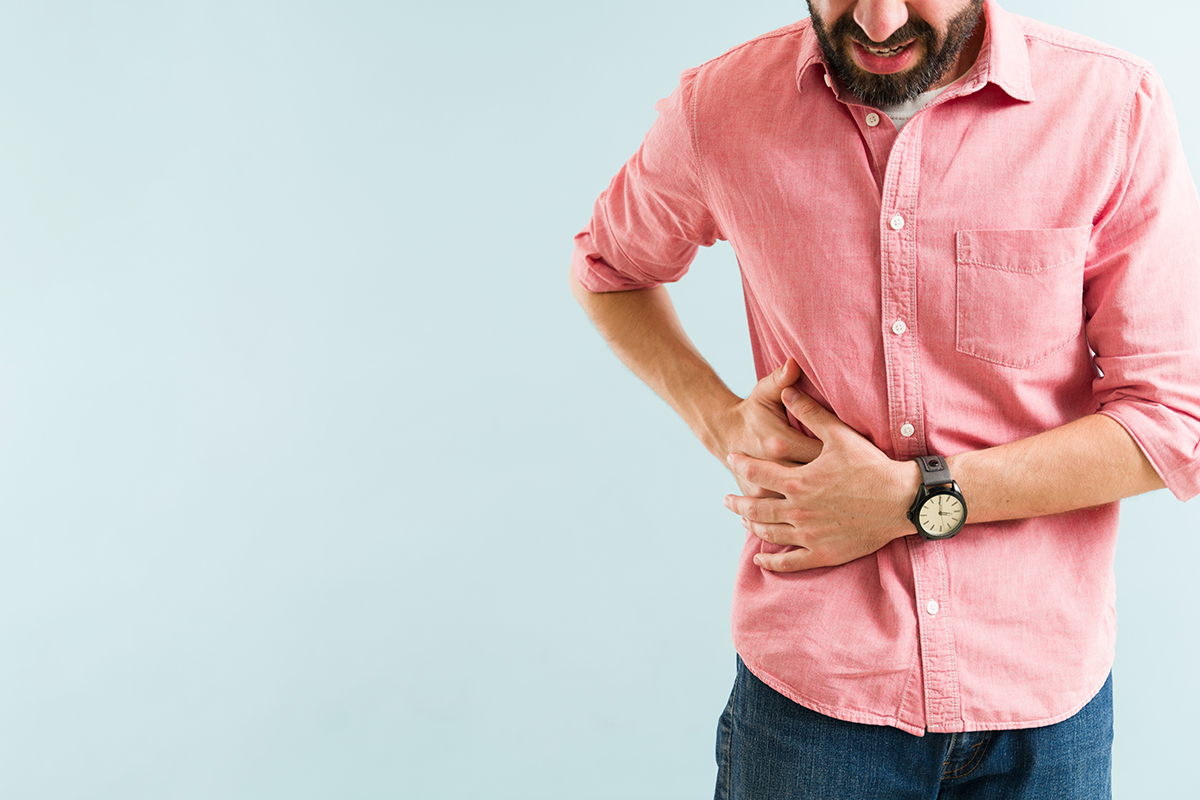Reducing the Risk of Gallstones

Gallstones, although generally harmless, can be painful or can cause dangerous complications if left untreated. The National Institute of Diabetes and Digestive and Kidney Diseases (NIDDK) found that 10-15% of Americans are affected by gallstones. While there are some risk factors that are out of your control, like age, sex and genetics, there are things you can do to help reduce your risk of developing gallstones.
What Are Gallstones?
Gallstones are hard pieces of solid material that form in the gallbladder. The gallbladder’s main function is to store a substance called bile until the body needs it for digestion. Made up of cholesterol and bilirubin (a dark-brown waste product that gives bile and stool its brown hue) your liver produces bile to break up fats and ease digestion. When the components of the bile collect, they can harden and crystalize forming a gallstone.
Causes of Gallstones
Gallstones are thought to be caused by too much cholesterol or bilirubin in the bile. There are many factors that could increase this risk of gallstone disease including:
- Having diabetes
- Obesity
- Having an inactive lifestyle
- Liver disease
- A family history of gallstones
- Being over age 40
- A higher concentration of the components that make up bile
- Having Crohn’s disease or irritable bowel syndrome (IBS)
- Having recently lost weight (either from dieting or weight loss surgery)
Symptoms of Gallstones
In many cases, gallstones don’t cause any symptoms, but if a gallstone blocks one of the bile ducts it can cause:
- Pain in the upper belly, often on the right side, just under the ribs
- Occasional vomiting or sweating
- Pain that occurs after eating or wakes you from sleep
How to Reduce the Risk of Gallstones
Fortunately, by maintaining a healthy weight through diet and exercise and being careful about certain medications you can reduce the risk for gallbladder disease. Four ways to reduce the risk of gallstones include:
- Lose Weight – The most effective way to prevent gallstones is by losing weight. But be wary of crash diets and programs that might induce rapid weight loss as these can actually increase the risk of developing gallstones. Weight loss goals should include losing a pound or two a week through a healthy diet and exercise over a six-month period to reach an ideal body weight. This will help prevent gallstones.
- Healthy Diet – Diet can play an important role in preventing gallstones. Eating a balanced mix of plant-based foods, like nuts, vegetables, fruits, foods high in fiber and grains, while avoiding red meat, can lower the risk of gallstone disease. Stick to healthy fats found in avocados, canola oil and fish. Choose low-fat alternatives to red meat, like lean chicken and low-fat yogurt. Avoiding sugars and carbs can help lower the risk for gallstones, but you don’t have to give up your morning cup of Joe. Studies have proven that coffee consumption significantly reduces the risk of gallstone disease.
- Exercise – Regular physical activity, while also being good for your overall health, can play a significant role in reducing the chances of developing gallstones. The intensity of the activity is less important than the consistency. Participating in regular physical activity for at least 30 minutes five times a week can improve your health and prevent gallstones.
- Preventative Medication – For individuals with a higher risk of gallstone disease or patients undergoing weight-loss surgery, preventative medications can be used to prevent gallstones by dissolving them. Gallstones can also be prevented by taking cholesterol lowering medications, which are usually used to treat obesity or hormone replacement therapies, such as post-menopausal medications. These reduce bile acids, which are thought to contribute to the formation of gallstones.
Gallstone Treatment
Most cases of gallbladder disease don’t need to be treated because there are no symptoms. But for more serious cases, surgery to take the gallbladder out may be the best option.
- Cholecystectomy – A laparoscopic cholecystectomy is the most common surgery for gallstone disease. It involves a surgeon passing a narrow tube called a laparoscope into a small cut in your abdomen. Using the instruments, light and camera held by the laparoscope, the surgeon then removes the gallbladder through another small cut in the abdomen. This procedure is beneficial because it is usually less painful, and you may get to go home the same day. They may also perform an open cholecystectomy which involves creating bigger incisions in the abdomen to remove the gallbladder. This requires a longer hospital stay.
- Robotic Cholecystectomy – A robotic cholecystectomy is done through one incision at the belly button. A tiny camera is then inserted into the removal site that gives the surgeon a three-dimensional view of the site. The surgeon then sits at a console and manipulates robotic arms that hold the small instruments needed for the procedure through the single incision.
When is Surgery Necessary?
Gallstones can go away on their own, but if they start to obstruct the flow of bile for long periods of time or move into other organs, they can cause serious problems such as intense abdominal pain that may last longer than 8 hours, a high temperature, chills and jaundice. If these symptoms occur, your doctor may recommend surgery.
If you are experiencing abdominal pain and are showing symptoms of gallstone disease, contact us today for an appointment with one of our surgeons.

